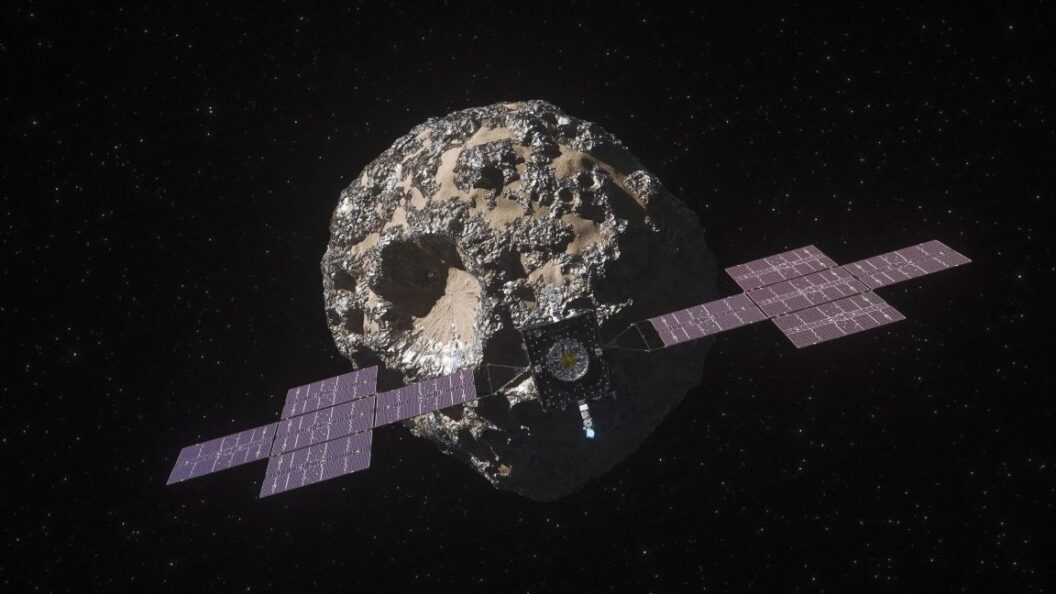NASA’s Psyche Mission Regains Traction After Propulsion Issues
NASA’s Psyche spacecraft, designed to explore a unique metallic asteroid, has resumed full functionality in its propulsion system. After experiencing a valve malfunction that potentially jeopardized its timeline, the spacecraft will now utilize its electric thrusters over the next three months to ensure it remains on course for its scheduled arrival at asteroid Psyche in 2029.
Successful Recovery Amid Technical Challenges
On Friday, NASA officials reported that team efforts pinpointed the malfunction to a valve in the primary fuel line. By switching to a backup propellant line in late May, the spacecraft successfully regained its propulsion capabilities. "Through comprehensive testing and analysis, the team narrowed down the potential causes to a valve that may have malfunctioned in the primary line," NASA stated.
This recovery is especially crucial as Psyche is set to perform a flyby of Mars in May 2026—a vital gravitational assist that will propel the spacecraft deeper into the Solar System. Meeting this landmark date is essential for maintaining momentum toward its ultimate destination.
A Unique Mission to a Pioneering Asteroid
The Psyche asteroid, located in the asteroid belt, is estimated to be about 140 miles (226 kilometers) wide, comparable in size to Massachusetts. However, its shape is more akin to that of a potato, raising intrigue among scientists about its composition and physical characteristics. Unlike other known asteroids, Psyche is an M-type, primarily composed of metals such as iron and nickel, which offers a unique opportunity to study an object that diverges from the typical rocky mineral composition of celestial bodies.
Upon arrival, the Psyche spacecraft plans to enter orbit around the asteroid and conduct detailed surveys using a suite of sensors. These instruments will map Psyche’s surface, assess its shape, mass, and gravitational field, and analyze its elemental makeup. This groundbreaking exploration aims to shed light on the history of our Solar System, particularly in understanding planetary formation.
Teamwork and Engineering Excellence
Bob Mase, project manager for the Psyche mission at JPL, commended the team’s systematic investigation and recovery efforts. "The mission team’s dedication and systematic approach to this investigation exemplifies the best of NASA engineering," he remarked, highlighting the significance of robust spacecraft design and teamwork.
Lingering Concerns Amid Progress
Despite the successful recovery of the propulsion system, concerns remain regarding the initial malfunction possibly affecting the backup line’s valve. Principal investigator Lindy Elkins-Tanton from Arizona State University expressed ongoing vigilance regarding this potential issue, reassuring that proactive measures are being taken. "We are doing a lot of good proactive work around that possible issue," she noted in a recent update.
Conclusion: Implications for Science and Exploration
As NASA’s Psyche spacecraft resumes its planned trajectory, the mission not only represents a significant advancement in understanding a largely unexplored category of asteroids but also highlights the importance of resilience in space exploration. The successful mitigation of potential technical setbacks demonstrates NASA’s capabilities in engineering and mission planning, paving the way for future explorations beyond our planet.
The mission’s ultimate success could provide valuable insights into the building blocks of planetary bodies, further enriching our understanding of the Solar System’s history and formation. With the Psyche spacecraft back on track, anticipation builds for its arrival in 2029 and the groundbreaking discoveries that lie ahead.









